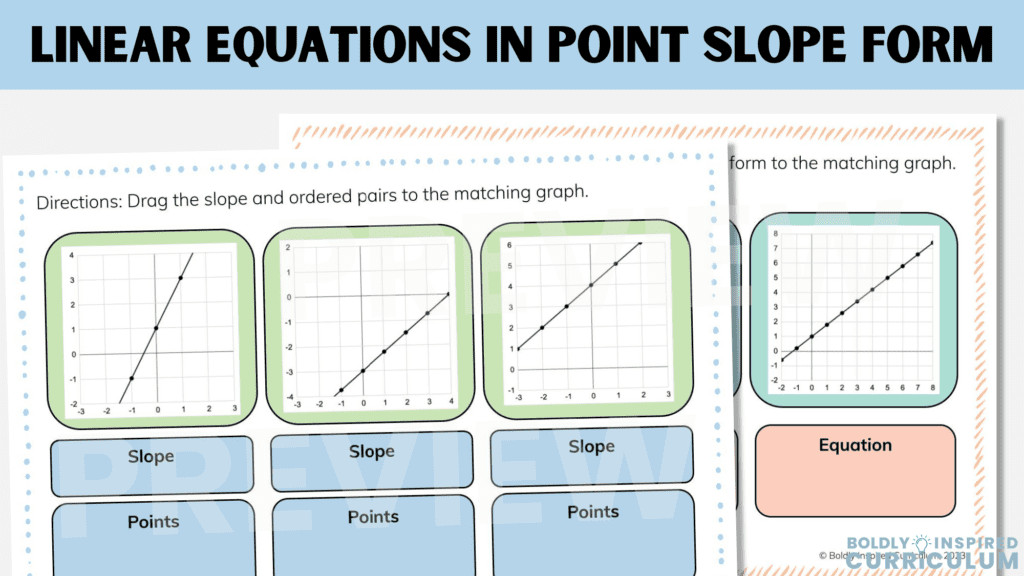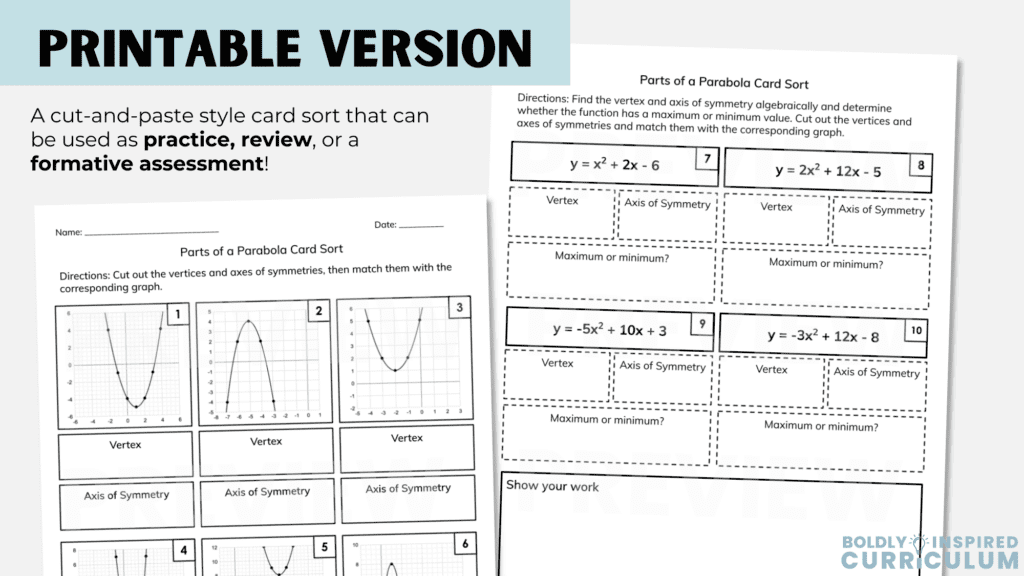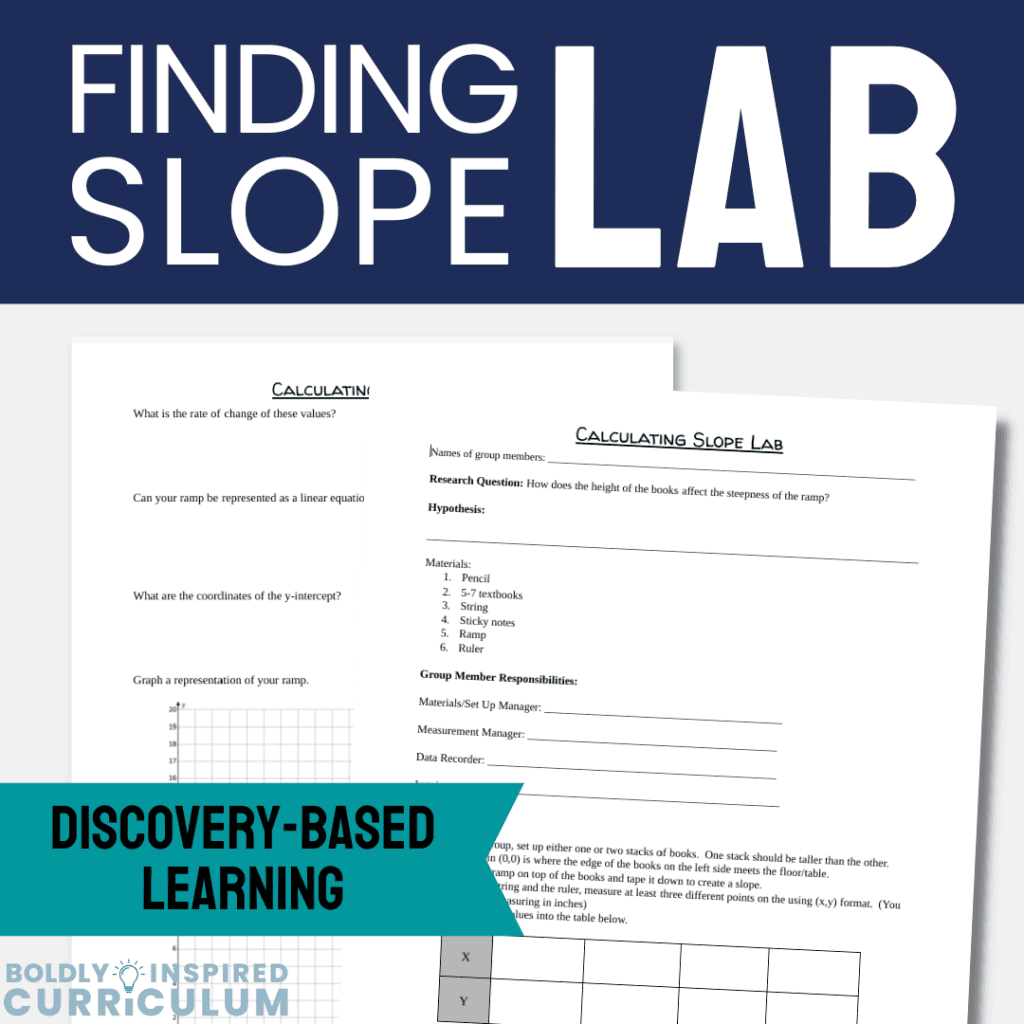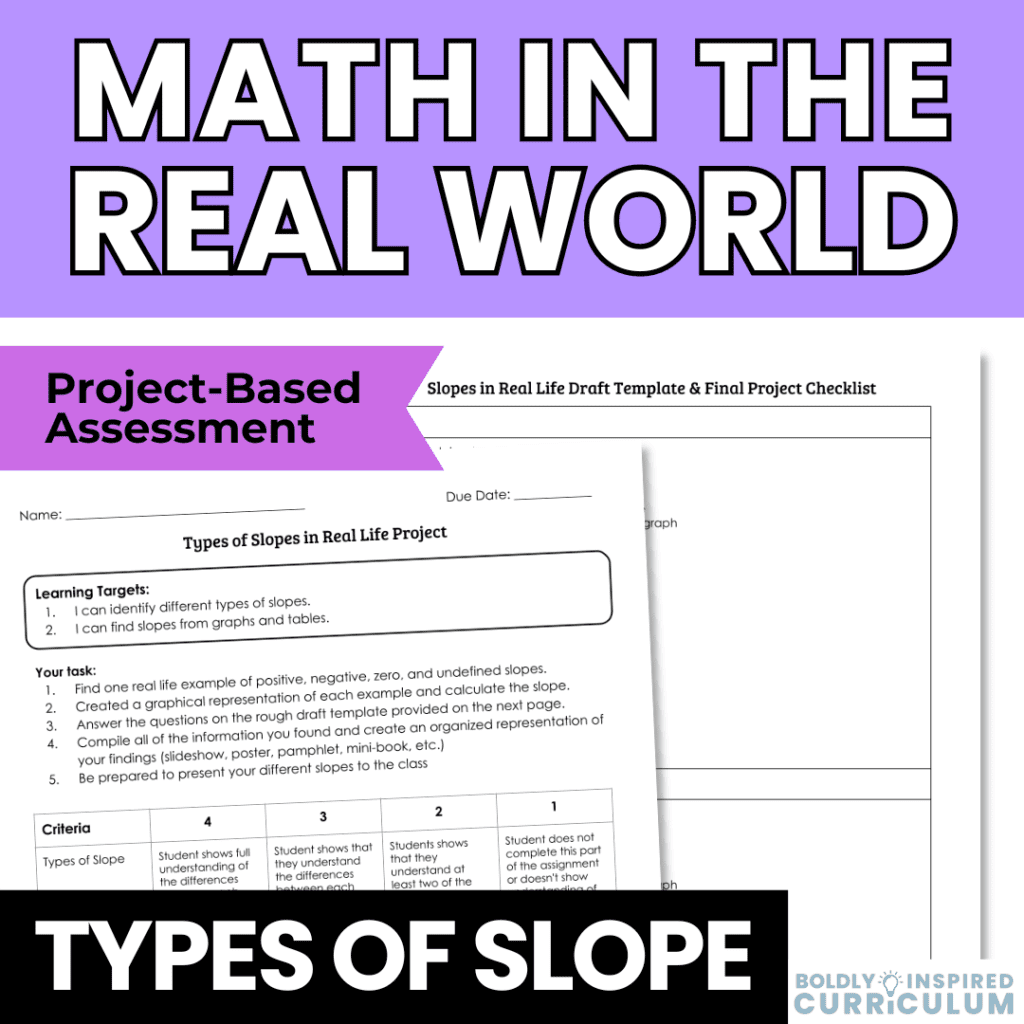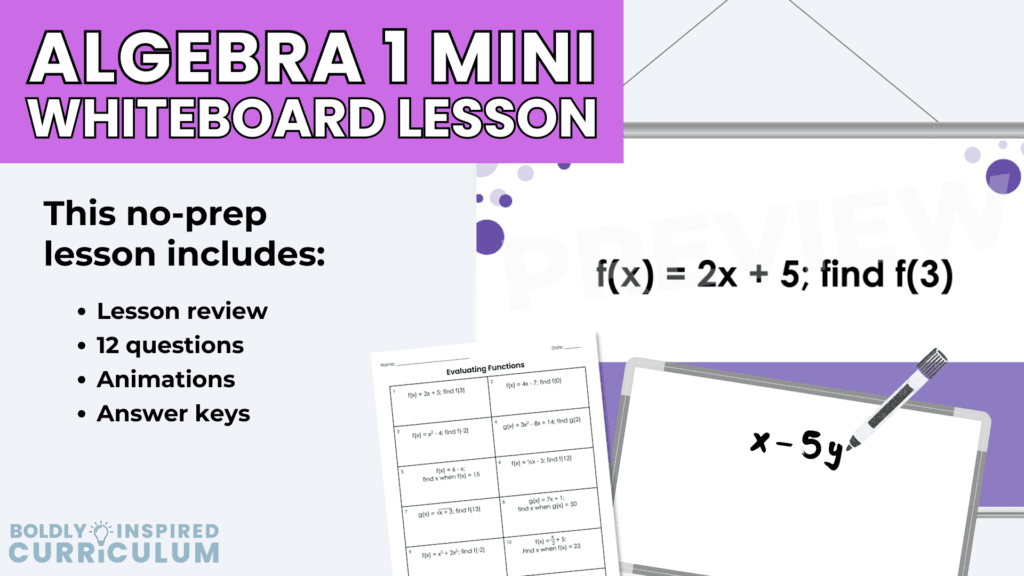Hands-on math activities are a great way to engage students and help them learn algebra concepts. Typically math manipulatives are designed for elementary aged students, but exploration can be just what high school students need to truly master a math concept.
In this blog post, we will explore several hands-on activities that can be used in the classroom and supplies you will need to get started. These activities are designed to be an engaging and effective way to teach a variety of algebra topics.

Table of Contents
ToggleCard Sorts
My first year of teaching I had a student who had a full lightbulb moment while doing a card sort. It was incredible and what got me hooked on hands-on math activities. He really struggled with writing and graphing equations and didn’t have the focus or skills to complete a worksheet by hand.
As soon as he was in a pairing with one other person and was given a card sort to match linear equations (in slope intercept and standard form) to their graphs, he excelled. I had never seen this student work so quickly and diligently, which is when I knew that I needed to start giving my students different ways to show they understood.
One of my favorite differentiation strategies is using card sorts or having answer banks so that students have a starting point. So often students don’t even know where to start when they are given a huge list of problems to complete. Card sorts take the pressure off of the assignment by allowing them to problem solve and sort through their options.
Writing linear equations
I have always had a hard time finding resources that are made solely for point-slope form. I decided to create this activity to help my students to give my students a different way to practice writing and graphing linear equations in point-slope form.
Writing equations in point-slope form makes writing equations in any form more efficient, so any extra practice that I could give my students was always worthwhile.
This activity can be used for independent practice, group work, or a formative assessment. The digital version of this activity includes three Google Slides with graphs and solutions that the students will drag and drop. The printable version of this card sort can be laminated and reused or used as a cut-and-paste activity.
Vertex form
This digital card sort (with a printable option!) for quadratic function is perfect for extra practice, math centers or test review. The students will find vertices, axes of symmetry, and minimums/maximums from a graph and a quadratic equation.
The printable version can be used as an independent cut-and-paste activity or laminated for group work. A full set of teacher directions is included for both versions of this card sort activity.
Experiments
Experimentation is one of the best ways to learn. Students can listen to a lecture and complete practice problems all day. Actually figuring out a solution with only their background knowledge and other resources will help them remember a concept better than if they were to just go through the motions of solving a problem.
Slope Lab
This Algebra 1 project tasks students with using discovery learning to reinforce finding slope and graphing equations. Your students will work together to create their own slopes using items found in their classroom. They will make observations and compare and contrast the types of slopes they created through this project-based learning experiment.
Types of Slope in Real Life
This types of slope project encourages your Algebra 1 students to think outside of the box and relate math to real life. Your students will find real-life examples of positive, negative, zero, and undefined slopes.
They will then create a table and graphical representation of each type of slope and present their final draft to the class! This slope project is perfect for group work and collaboration. It can also be used as a stand-alone summative assessment.
Whiteboards
Whiteboards encourage students to problem solve by being able to draw or write then erase and try again. Even non-visual learners can benefit from drawing a picture and writing down their thoughts.
The book Building Thinking Classrooms suggests using vertical, non-permanent spaces for students to collaborate and work through their thought processes. This encourages students to share ideas and participate equally while working through a problem.
You can use individual whiteboards for task card activities as well. This will get your students up and moving while having a handheld place to show their work.
Geoboards
Geoboards are amazing for geometry class. The rubber bands allow students to experiment with graphing lines, area, and perimeter. They can compare and contrast different shapes and conduct transformations physically rather than just on paper.
Algebra tiles
You’d be surprised by how many ways algebra tiles can be used in your math classroom. I have used them with my students for solving equations, solving systems of equations, and polynomial operations.
Rachael from Rise Over Run has a great free course for how to use algebra tiles for teaching polynomial operations. You’ll definitely want to check this out if you are interested in learning about new ways to teach old math concepts.
Final thoughts about hands-on math activities
Hands-on math activities offer a dynamic and engaging approach to teaching and learning algebra concepts. By incorporating hands-on activities into your classroom, you can cater to various learning styles, promote problem-solving skills, and make math more enjoyable for students. Experiment with different activities and reflect on the outcomes to find a routine that works the best for you and your students!
